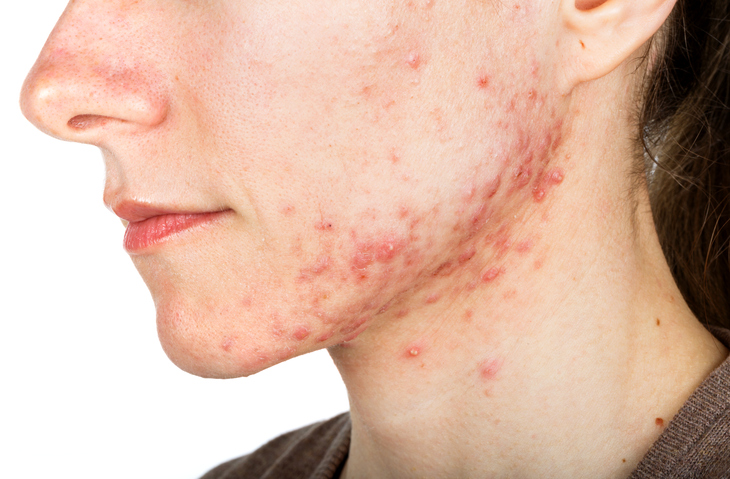
Isotretinoin (chemical formula: C20H28O2), appears as a white powder. It does not mix well with water. isotretinoin is considered stable.
Isotretinoin is a medication prescribed to treat severe acne and other skin related cancers and diseases. It is highly potent and is known to cause birth defects and every precaution must be taken to ensure women do not conceive while taking the drug.
Isotretinoin is primarily used in the treatment of severe cystic acne and as a last resort for acne that has not responded to other treatments.

The routes of exposure for isotretinoin include inhalation, ingestion and skin and eye contact.
Inhalation of isotretinoin may produce respiratory irritation and inflammation. Those with already compromised respiratory function (conditions such as emphysema or chronic bronchitis), may suffer further disability following inhalation. People with prior circulatory, nervous system or kidney damage should also take extra precautions when handling the chemical.
Ingestion of isotretinoin can be damaging to health, with the expected fatal dose being less than 150g. Symptoms can include; peeling of the skin, sedation, headache, irritability, nosebleeds, fragile nails, fever, mild headache, fatigue, insomnia, minor depression, dizziness, vomiting and more.
Skin exposure to isotretinoin may produce inflammation in many people. The skin affected by the chemical is likely to turn red, swell and possibly blister. Other harmful effects may result following entry into the bloodstream, so it is important that the skin is inspected for open cuts or wounds prior to handling the chemical.
Direct eye exposure to the chemical may cause transient discomfort characterised by tearing and redness. Temporary vision impairment and other transient eye damage may also result.
If inhaled, remove the patient from the contaminated area to the nearest fresh air source. Lay the patient down and ensure they are kept warm and rested. If the patient is not breathing and you are qualified to do so, perform CPR, preferably with a bag-valve mask device. Seek medical attention without delay.
If swallowed, urgent hospital treatment is likely to be required. In the meantime, someone qualified in first-aid should treat and observe the patient, ensuring they have a copy of the SDS. If medical attention is more than 15 minutes away, induce vomiting with fingers down the back of the throat, ensuring the patient is leaned forward or placed on their left side to prevent aspiration.
In the event of skin exposure, remove all contaminated clothing, footwear and accessories and flush the affected area with plenty of soap and running water. Seek medical attention in the event of irritation.
If exposed to the eyes, flush the eyes out immediately with fresh running water, remembering to wash under the eyelids. Removal of contact lenses should only be done by a skilled individual. Seek medical attention without delay.
Emergency eye wash fountains and safety showers should be accessible in the immediate area of the potential exposure to the chemical and there should always be adequate ventilation to remove or dilute any air contaminants (install local exhaust if necessary).
The PPE recommended when handling isotretinoin includes, chemical goggles, full face shields, dust respirators, PVC/rubber gloves, safety footwear, protective shoe covers, head coverings and vinyl suits in cases of emergency.
Isotretinoin should always be handled with care to avoid harmful health effects due to improper handling. Refer to the SDS to ensure you are fully aware of the hazards before you begin handling the chemical. Click here for a trial of our SDS Management Software or contact us at sales@chemwatch.net for more information about our chemicals management solutions.